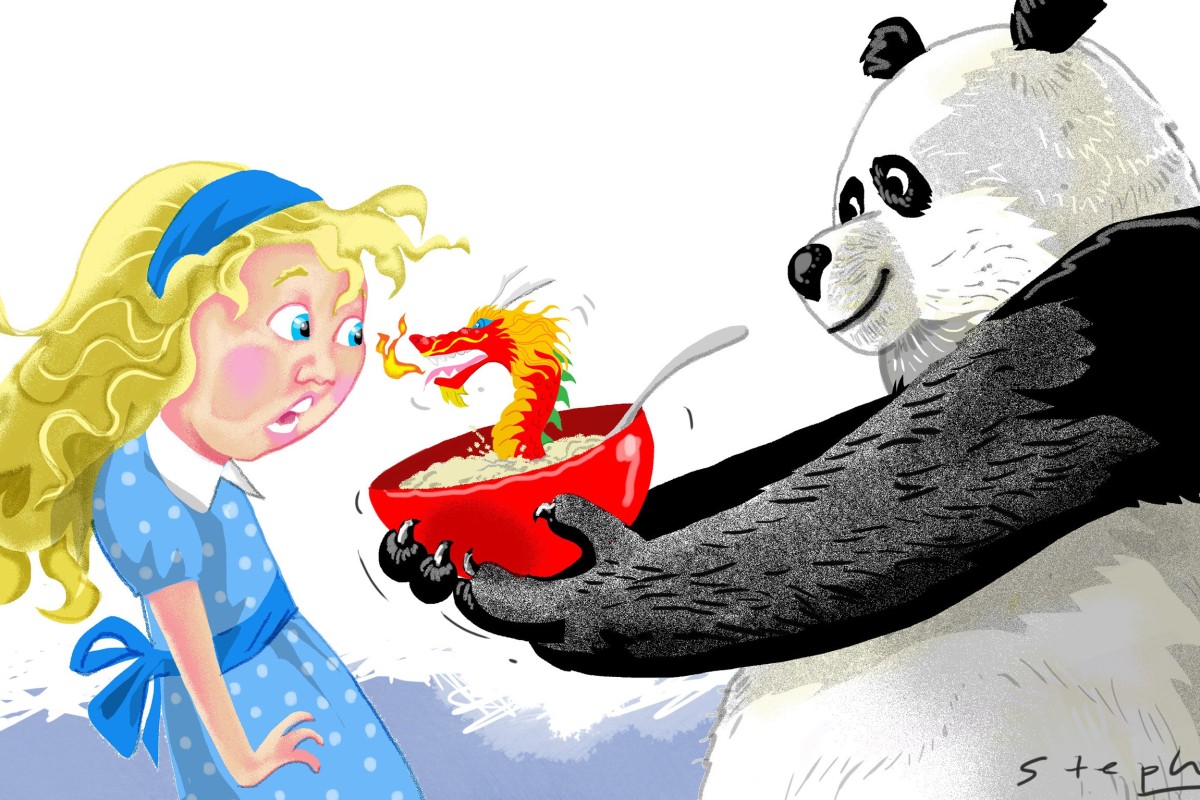 Thus, like the bears’ porridge in the children’s story Goldilocks, China’s soft-power efforts have proven either too hot or too cold for some, whereas for others it is “just right”. Finding that “Goldilocks zone” of a “just right” soft-power strategy in the West is arguably one of China’s greatest foreign policy challenges for 2019 and beyond.
Thus, like the bears’ porridge in the children’s story Goldilocks, China’s soft-power efforts have proven either too hot or too cold for some, whereas for others it is “just right”. Finding that “Goldilocks zone” of a “just right” soft-power strategy in the West is arguably one of China’s greatest foreign policy challenges for 2019 and beyond.
The essence of soft power is that one state can get another state to do what it wants through co-option, not coercion. And this is perhaps where China’s soft-power efforts have come unstuck so far in the West: far from relying on persuasion, China’s soft-power strategies have arguably been adopted with something of a hard-power logic, a phenomenon which Christopher Walker and Jessica Ludwig have termed “sharp power”.
Whether it stems from an ingrained Sinophobia or perhaps fear emanating from the uncertainty of China’s rise, there does seem to be an overreaction in the West to China’s capabilities.
Professor
Anne-Marie Brady, a China scholar, even goes as far as characterising China as having magic weapons which have led to unparalleled success in influencing “the decision-making of foreign governments and societies”.
It is probably a stretch to characterise China as having magic weapons because, as Pei rightly points out, Western democracies have some useful safeguards – such as democratic transparency – against China’s influence.
Still, as China continues to rise, its foreign policies are naturally going to become more assertive and involve the use of an array of power capabilities, including a greater focus on using soft power.
Take, for example, China’s
funding of Confucius Institutes in universities across the globe. Officially, the Confucius Institutes promote Chinese language and culture abroad. In other words, the institutes aim to cultivate soft power in the way Alliance Française or the British Council have done for France and the UK.
However, in the 14 years the Confucius Institutes have been operating, the soft-power cultivation has arguably taken a back seat to more sinister allegations of Communist Party propagandising (especially over issues like Tibet and now Xinjiang), meddling in university politics, the monitoring of students and dissidents, and even state-led espionage.
Using a sharper soft-power strategy completely contradicts how soft power works best: through co-option, not coercion. Unsurprisingly, as a result of the allegations listed above, several universities in the United States and Canada have decided to discontinue their contracts with Hanban, the official Communist Party body which administers the Confucius Institutes.
 A student from the State University of New York at Binghamton rehearsing on November 15 for a performance of Chinese opera, organised by the Confucius Institute of Chinese Opera, as part of the university’s International Education Week. Photo: Xinhua
A student from the State University of New York at Binghamton rehearsing on November 15 for a performance of Chinese opera, organised by the Confucius Institute of Chinese Opera, as part of the university’s International Education Week. Photo: Xinhua
Share:
However, it is unwise to see China’s soft-power strategies as monolithic or static and China as incapable of taking feedback on board. The Confucius Institutes demonstrate this well. Hanban has changed tack when it has misstepped. For instance, the institutes select their own teaching materials and although Hanban still provides textbooks, there is no requirement to use them.
And while the institutes have become somewhat unstuck in the West, some of China’s other soft-power initiatives have found fertile ground. Sister-city partnerships have grown at an incredible rate;
201 sister-city agreements exist in the US alone.
Popular cultural events such as Lunar New Year celebrations across the world receive financial support from the Chinese embassy and Ministry of Culture. Chinese non-state actors may also boost China’s appeal through sponsorship of major international events, such as the
World Cup, and scientific innovation.
Furthermore, painting China as a crude sharp power does something of a disservice to some of China’s diplomatic successes in developing countries, particularly in Central Asia and Africa.
For example, in 2017, China achieved its goal of becoming the No 1 destination for study in Asia, with an increase in students from Belt and Road nations. Uganda, mindful of China’s global and domestic presence, has even made study of the Chinese language compulsory at some secondary schools.
It is plausible that some of the criticism of the Confucius Institutes is a by-product of the growing fear in the West about China’s rise. Indeed, Barry Sautman goes as far as to suggest that criticism of the institutes is mainly an
“all-American” problem,while Michael Barr argues that these concerns tell us more about self-image in liberal democracies than China’s actions.
This is a difficult hurdle for Beijing to overcome because finding the Goldilocks zone requires collaborative relationships with target states based on, according to public diplomacy experts, “concrete and typically easily identified goals and outcomes that provide a basis to form more lasting relationships”.
Thus, for a collaborative relationship to succeed, not only does China have to improve the way it cultivates and uses its soft power, but Western states will also have to come to the party.
And while such an outcome appears overly optimistic in the current setting, it is imperative to the future of international affairs that all sides remain open to dialogue and compromise, or we are likely to creep ever closer to the emergence of a Sino-West cold war.
No comments:
Post a Comment